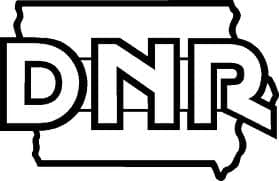Iowa’s Shotgun Deer Season Preview
Iowa Department of Natural Resources 11.28.12

Heading into Iowa’s busiest outdoor ‘opening day,’ shotgun deer season hunters should expect to see fewer deer. While that downturn is by design, they should still fill plenty of tags, during the December 1-5 first shotgun season or the December 8-16 second season.
“Deer numbers are projected to be down at least ten percent from last year,” forecasts Tom Litchfield, DNR deer research biologist. “We have been working to decrease deer numbers since 2003. On a statewide basis, the herd is very close to objective; which would be the levels seen in the mid to late 1990s.”
With a relatively short season (five or nine days), shotgun hunters often must adapt to the weather. Looking ahead to the next week, seasonal temperatures and a continued brown—not white—landscape lie ahead for hunters holding about 172,000 paid first season, paid second season and landowner tags.
One strategy that remains constant is hunting with the wind. Deer rely primarily on their noses, to warn of danger. Hunters should keep that in mind, especially as they set up drives.
“It is always good to set up drives so that as you move the deer, they don’t have a good opportunity to smell the blockers as they approach. Have them downwind from the deer,” emphasizes Litchfield. “A lot of hunters drive the same block of ground in the same way every year. Paying attention to the wind may produce better results.”
Hunters are Iowa’s primary deer management tool. It is a role they have carried out well in the last decade, with that emphasis to reduce deer numbers. That has been accomplished, primarily, through increased sale of county-specific antlerless tags.
The ‘all seasons’ harvest—including deer taken in the bow, muzzleloader, January, youth and handicapped seasons–reflects that downturn, with 121,407 deer reported by hunters in 2011-12. That compares to 211,451 in 2005-06; though harvest reporting techniques did change during that span.
Somewhat of a ‘wild card’ this fall and winter will be the impact of Epizootic Hemorrhaging Disease (EHD) across much of the state. Nearly 3,000 reports of suspected EHD have been received; with concentrations in central and southwest counties and several more western counties through the Loess Hills. In all, 63 counties have at least one suspected case. The hot weather, insect-carried disease has essentially run its course for this year; with heavy frost killing off the midge, which spreads it.
Still, hunters may find more dead deer, as they fan out across the landscape.
“We know this EHD outbreak had at least significant localized impact; and that impact won’t be assessed until we go through the hunting season,” says Litchfield.
With the emphasis on downsizing the herd, Litchfield sees about 60 of Iowa’s 99 counties ‘at objective.’ Another 20 should reach it after this season. The remainder likely would fall into place after 2013-14. He is concerned, however, that the EHD outbreak could change that dynamic—lowering hunter harvest and post-season counts—for some counties.

